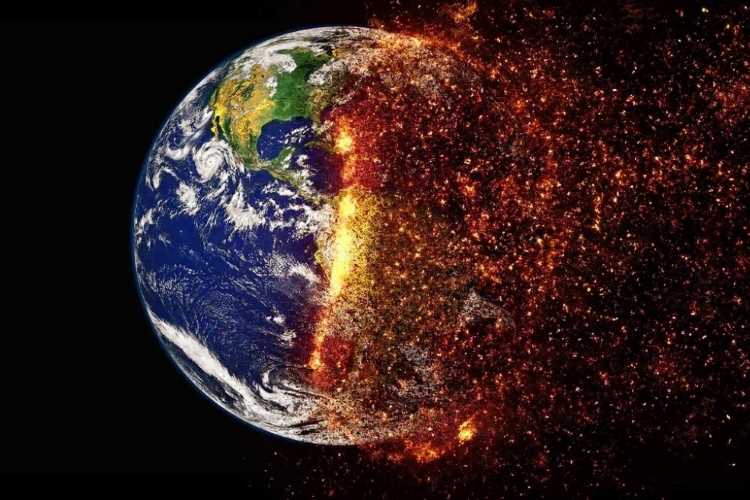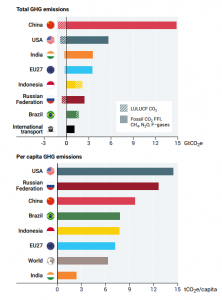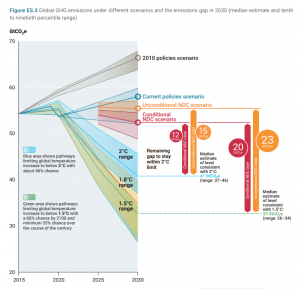
The world is poised to warm 2.6-2.8 degrees Celsius by the end of the century as the commitments made by nations are inadequate to have an impact on global emissions projections, says the UN’s Emissions Gap Report 2022. The world needs rapid sector and system-wide transformations in power, industry, transport and buildings sectors, as well as in the food and financial systems to avert global warming beyond agreed targets.
The report sets the tone for the upcoming COP27 climate summit at Sharm el-Sheikh, Egypt. The alarming report may force countries to do more to reduce greenhouse gas emissions. The Paris Agreement of 2015 had agreed to limit global warming within 2 degrees above pre-industrial levels.
The world nations are sharply divided on climate action. A blame game is perpetually on as greenhouse gas emissions are inequitable. The top 20 countries are responsible for 75% of emissions. China, the EU, India, Indonesia, Brazil, the Russian Federation and the United States — the top seven emitters – accounted for 55% of global emissions in 2020.
The rich countries which are responsible for bulk of the emissions are accused of not supporting the poorer nations through transfer of funds and technology. The inequities exist also in consumption and emissions. The highest one percentile of consumption households pollute much more than the bottom half households.
READ I Sustainable profits: How ESG is helping businesses shift focus
World to miss global warming goals
Despite a unanimous decision by all participating countries at the 2021 COP26 climate summit in Glasgow to improve on the nationally determined contributions, there has been no positive development on this front. As the nations prepare to kick off COP27, the NDCs this year would take an additional 0.5 gigatonnes of carbon dioxide which is less than one per cent of the projected emissions at the end of the decade.

This is worrying as the unconditional NDCs will give only a 66% probability to limit global warming to 2.6 degrees at the turn of the century. The policies pursued by the governments will lead to a 2.8 degree increase in temperature. To achieve the Paris pact goals, the nations must cut greenhouse gas emissions drastically in the next eight years and this will need large-scale systemic transformation, says the report.

Global greenhouse gas emissions have shown growth in the last 10 years, but the growth rate has slowed in comparison with the previous 10 years. The average annual growth was 1.1% between 2010 and 2019, compared with 2.6% between 2000 and 2009.
Cuts by most-polluting industries
To limit global warming to manageable levels, industries such as power supply, transportation and buildings – the biggest emitters of greenhouse gases – need to move towards net-zero emissions at a fast pace. Despite a fall in the cost of renewable energy, the pace of clean energy transformation needs to pick up to cut emissions by the sector. Zero emission technology needs to be deployed in industry, building and transport sectors. To speed up the transformation, these sectors need to avoid building fresh fossil fuel-intensive infrastructure.
Food systems account for a third of greenhouse gas emissions. Protection of ecosystems, dietary changes, improvements in food production and decarbonisation of supply chains are needed to reduce food system emission projections to around a third of current levels by 2050. The governments must reform subsidy regimes and tax sops to facilitate transformation. There should be a move to reduce food waste, clean energy and novel foods that can reduce emissions. This also needs adjustments by individual citizens.
A transformation to a low-emission economy will need investments worth $4-6 trillion every year, which is just 1.5-2% of the total financial assets and 20-28% of additional annual resource allocation. The players in financial sector have shown little interest in climate change mitigation because it goes against their short-term interests. The financial actors and governments must move towards a transformation of the financial system, its structures and processes.
